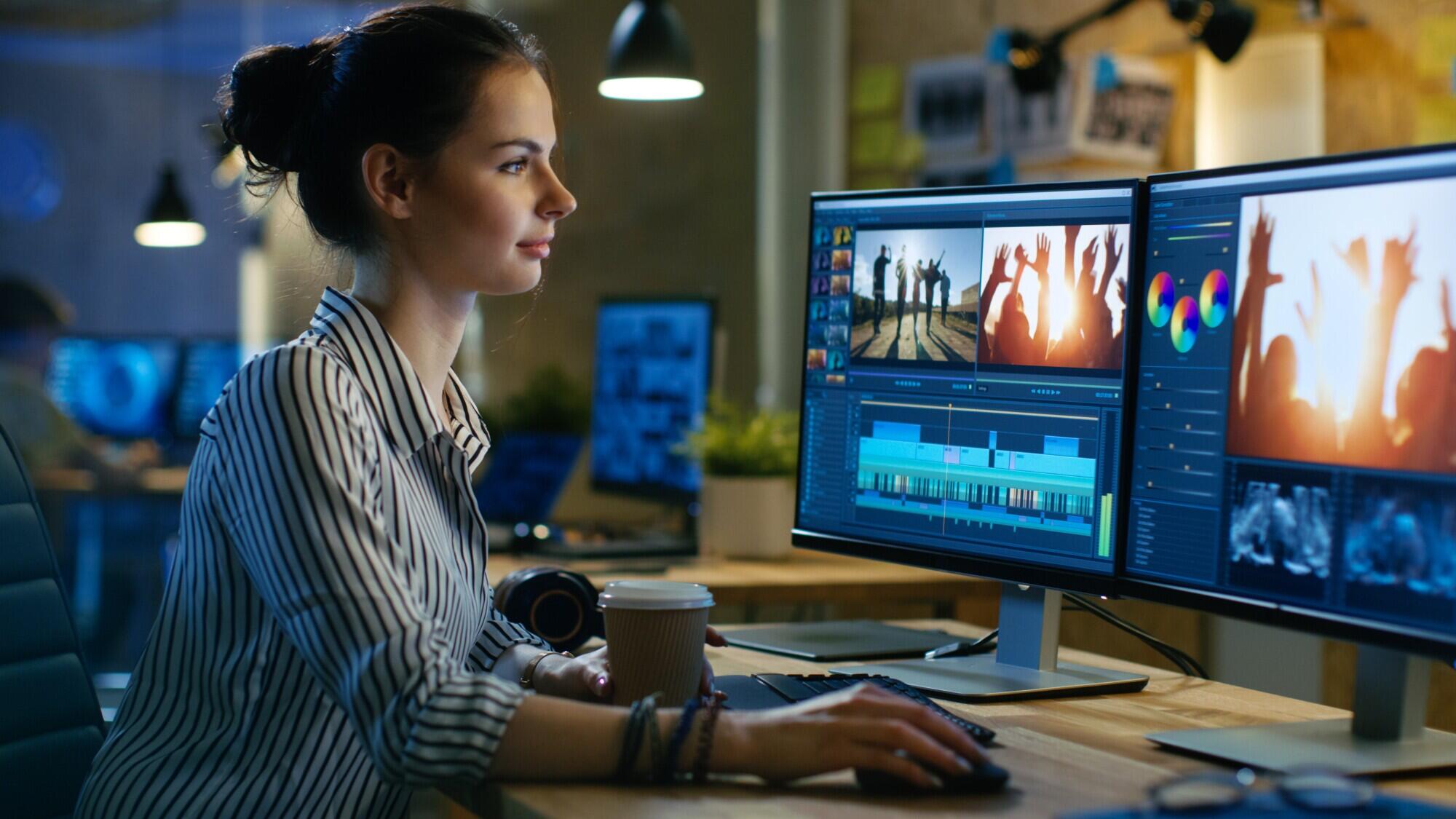What if the future of video editing looked nothing like today’s editing suites? Technology is changing fast, and so are the tools that bring stories to life. From AI-powered effects to cloud-based collaboration, editors now have more power than ever.
But with so many new features, how do you know what truly matters? What separates a flashy gimmick from a game-changing upgrade? Video editing is evolving into something smarter, faster, and more intuitive.
This guide reveals the essential features shaping the future of video editing-and why they’re worth your attention. Read on!
Artificial Intelligence Takes the Director’s Chair
Artificial intelligence is reshaping video editing by automating repetitive tasks and improving efficiency. AI tools can detect scenes, tag objects, and even suggest the best cuts based on emotion or motion. Editors can now remove backgrounds, color-correct footage, and clean audio in seconds.
Machine learning helps identify pacing, tone, and rhythm, allowing smoother transitions. Predictive algorithms can even match music to visuals automatically. This makes creativity faster, not harder.
Cloud Collaboration: Editing Without Borders
Gone are the days of passing around massive project files via email or hard drives. Cloud-based editing allows teams to collaborate in real time from anywhere in the world.
Editors, producers, and clients can review, comment, and update simultaneously. This eliminates version confusion and saves precious hours in post-production.
Advanced platforms now support secure cloud rendering, reducing the need for high-end local machines. Storage scalability also ensures projects stay safe without eating up hard drive space. The future is remote, connected, and incredibly efficient.
Real-Time Rendering and Playback
Waiting for previews to render used to be the editor’s least favorite part of the job. Now, real-time rendering changes everything. Thanks to powerful GPUs and optimized software, playback is instant, even for complex effects.
Editors can experiment with lighting, transitions, and animations without delay. This speed encourages creativity by removing interruptions in the workflow.
Real-time adjustments make it easier to maintain momentum and visual consistency. The result is smoother, faster, and far more enjoyable editing sessions.
Intuitive Motion Tracking and Visual Effects
Motion tracking is now an important feature that all modern video editors must have. It lets text or objects precisely follow movement, making visuals that are alive.
The newest tools use AI to automatically track points, which saves a lot of time making keyframes by hand. Now, visual effects software works well with editing platforms, so you don’t have to use as many separate programs. This integration makes it easier to be creative and keeps projects organized.
Motion tracking technology has improved both movies and everyday content creation. Motion tracking that is smarter, faster, and more accurate will shape future workflows.
Seamless Audio Editing Integration
Audio is half the viewing experience, yet it often gets overlooked. Modern editing suites now offer integrated sound tools that rival professional audio software.
Editors can adjust pitch, reduce noise, and balance levels without leaving the main timeline. AI-driven tools even analyze speech for clarity and consistency. Syncing dialogue and background music has never been easier.
One popular trick for pacing content involves using a video splitter to separate scenes and match beats effortlessly. As tools evolve, the line between audio and video editing continues to blur.
Advanced Color Grading and HDR Support
Before anyone says a word, the color tells the audience how they should feel. Color grading is going to a whole new level with new editing tools. Support for HDR (High Dynamic Range) makes sure that colors are bright and contrast is realistic.
With smart color matching, editors can give multiple clips the same look. With AI-assisted grading, exposure and white balance are fixed automatically. More visual and easy-to-use tools have been added to LUT (Look-Up Table) management.
Advanced color tools make movies look amazing, whether you’re making short films or videos for YouTube. The world of editing is going to be very different in the future.
Streamlined Interface and Customizable Workflows
A messy workspace kills ideas faster than a computer that won’t start up. That’s why modern software focuses on being easy to use and flexible. It is now possible for editors to change the layouts, panels, and shortcuts to fit their own style.
Adaptive interfaces recognize the tools you use most often based on your habits. Modular systems that you can drag and drop make work go more smoothly. This adaptability makes it easy for both experts and beginners to work on projects.
The future of editing is in places that are easy to use and not scary. Customization changes working hard into pure creative flow. Finally, efficiency and style come together.
Immersive Editing with Virtual and Augmented Reality
VR and AR aren’t just for gamers; they’re changing the way stories are told. Creators can work directly in 3D environments with immersive editing tools. Think about changing the angle of a camera in a virtual scene instead of on a flat timeline.
Editors can see in real time how depth, motion, and space look. With AR previews, teams can see effects that are projected onto their real environment. This technology makes it possible to turn ideas into real things.
Immersive editing will go from being a novelty to a must-have as headsets get easier to access. The future of editing videos could be all around you.
Automation Meets Human Creativity
It might sound scary, but automation is helpful when editing videos. Easy tasks like sorting clips, labeling shots, and syncing footage are taken care of by smart templates and AI assistants. This lets creators focus on telling stories and making people feel things.
Human error is also cut down by automation, which makes outputs smoother. Some tools can even make subtitles or highlight reels automatically. Still, creativity is a human trait; technology just makes it stronger.
The best editors know how to use both machines and their artistic sense. This led to faster production without giving up soul. People and machines will work together in the future, not against each other.
Exploring Upcoming Tools and Innovations That Will Shape Video Editing
The process of editing videos is changing quickly and smartly, combining creativity, connectivity, and intelligence. Next-generation tools will make technical work easier and artistic vision stronger.
Working methods are already changing because of things like AI automation, real-time rendering, and immersive interfaces. Collaboration across devices and borders makes creativity more open to everyone.
Adopting these new ideas will give editors a big speed and quality boost. Not much separates imagination from action these days. Video editing is already here, not in the future.
Did you like this guide? Great! Please browse our website for more!











